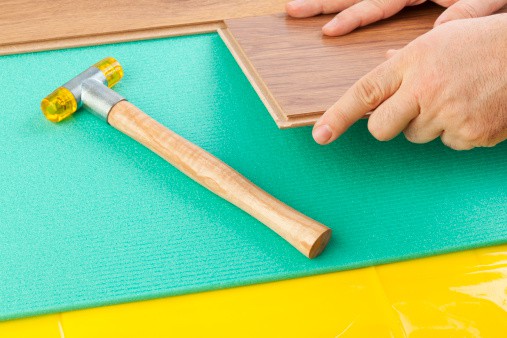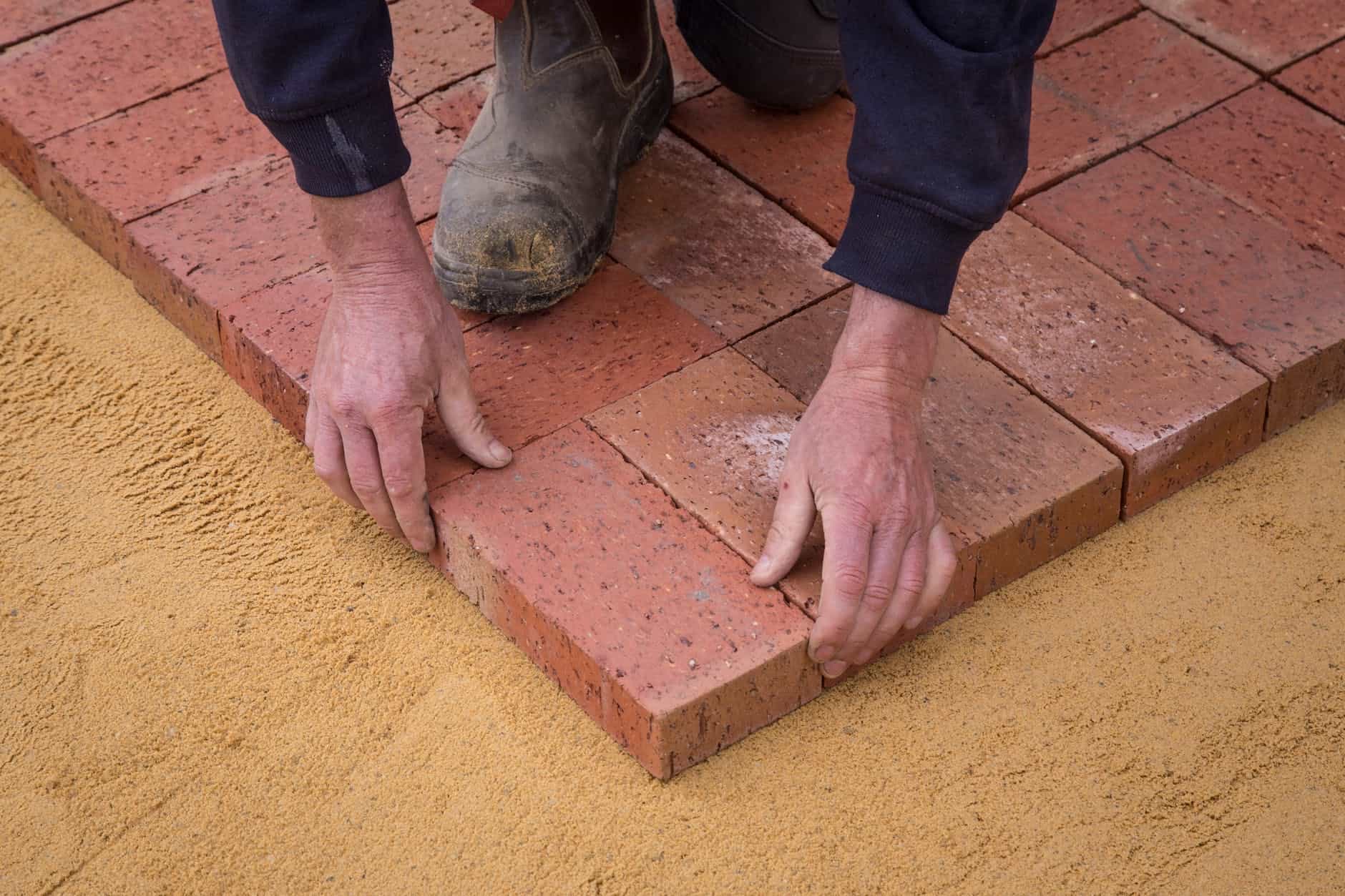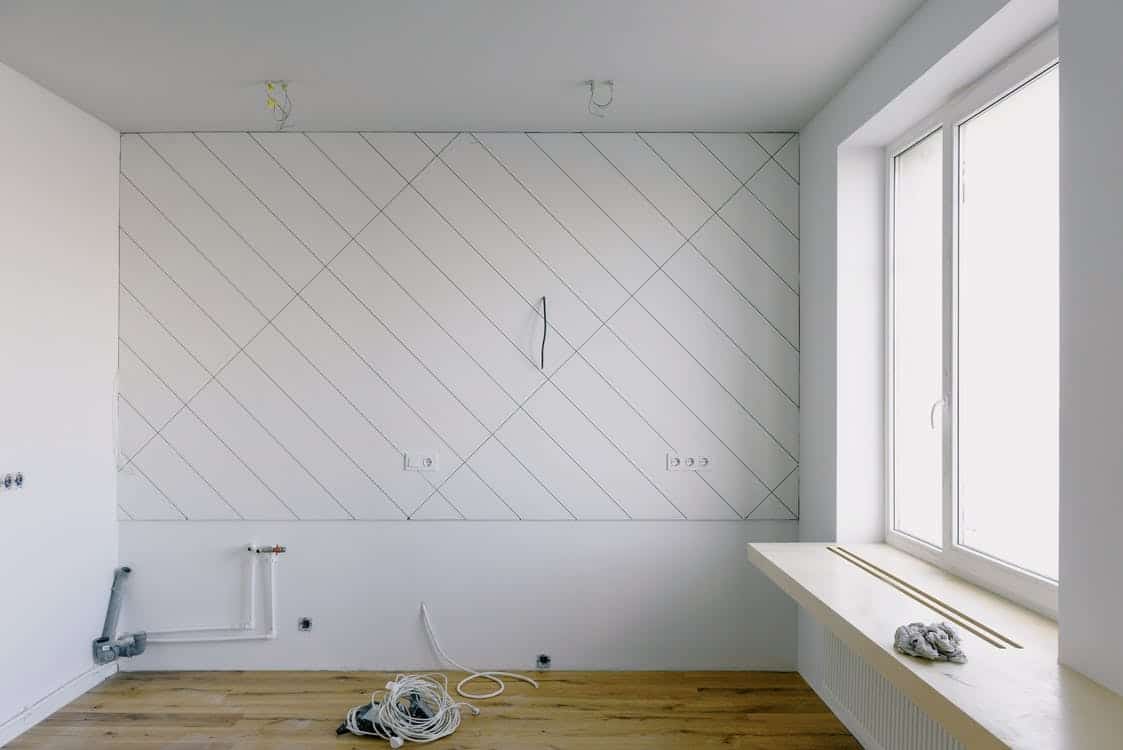Peel and stick vinyl plank flooring requires an underlayment, which typically acts as a protective barrier between the flooring and the subfloor. However, given the variety of available options, selecting the best underlayment for peel and stick tiles in the market may be challenging. Luckily, we have done the work for you.
We have outlined the best underlayments for peel and stick tiles and discussed the important factors to consider while buying one that matches your needs.
What is a Good Underlayment for Peel and Stick Tile?
Rank | Product Image | Brand Name | Link |
|---|---|---|---|
1 | |||
2 | |||
3 | |||
4 | |||
5 | |||
6 |
One of the most flexible flooring materials on the market is vinyl. A type of vinyl flooring is the peel and stick tiles which can be a quick and inexpensive design option because of the variety of styles available in this category.
The term "peel and stick tile," also known as "self-stick" or "self-adhesive vinyl tile," refers to vinyl planks or tiles that have an adhesive backing. Simply lay down planks or tiles like stickers and presto. The idea is the same if you've ever looked at peel-and-stick carpet tiles.

It is crucial to check with the manufacturer to determine whether an underlayment is required for peel and stick vinyl tiles. Some companies will state the kind of underlayment that can be used. Some even state that using the incorrect kind of underlayment may void the flooring's warranty.
1. Fortifiber 70-195 Tile Underlayment Roll, 500 sq. ft., Brown
- Ideal underlayment for interior installations of: ceramic,...
- Most commonly used beneath wood flooring, ceramic tile and stone...
- Sub-floor barrier slows moisture migration and helps prevent...
- An extremely effective moisture vapor retarder for use in a...
- 500 sq. ft. roll measuring 3 ft. x 167 ft..Consisting of two...
The Fortifiber 70-195 Tile Underlayment Roll is most frequently used as a membrane on walls, countertops, and household showers, or as a subfloor under wood flooring, ceramic tile, and stone veneer.
It has an efficient moisture vapor retarder that perfectly works as a membrane on walls, countertops, and private showers, as well as below wood flooring, ceramic tile, peel and stick tiles, and stone veneer.

Image Source: Fortifiber
It is also an ideal choice for interior installations of ceramic, porcelain, or stone over cement board, plywood, or concrete, as well as finished or unfinished wood floors over plywood or concrete.
With the help of this subfloor barrier, buckling, cupping, and cracking are reduced by the slower moisture transport. As a result, it prolongs the life and improves the beauty of your flooring. This underlayment for peel and stick tiles also serves as a slip sheet to lessen noise and dust.
Pros:
Cons:
2. QuietWalk Plus QW100PLUS Underlayment
- Use with Laminate, Floating Engineered, Nail Down and Glue-Down...
- Superior Sound Reduction ‐ Recycled fibers absorb sound and...
- Compression Resistant ‐ Dense recycled fiber structure supports...
- Moisture Protection ‐ Recycled fibers allow installation over...
- Certified Clean and Safe Indoor Air Quality ‐ No VOC's...
With a 3-millimeter thickness and recycled felt construction, we found this underlayment to be perfect for insulating against sound. It will greatly minimize noise thanks to its STC rating of 66 and IIC rating of 71. Due to its Greenguard-Gold certification, the material is guaranteed to have few volatile organic compounds (VOCs).
This underlayment is suitable for laminate, engineered wood, and bamboo flooring, and we also noted that radiant in-floor heating systems could use it. This is because the underlayment allows heat to move evenly on vinyl plank floors, ensuring the floor is well protected from thermal shock.

Image Source: QuietWalk Plus
However, this underlayment is subject to some restrictions. For example, this underlayment won't work with flooring that needs to be glued or fastened down. Additionally, you can only use it with vinyl flooring at least five millimeters thick.
Pros:
Cons:
3. QEP Natural Cork Underlayment Roll
- For use with ceramic and porcelain tile, stone, marble,...
- Crack isolation membrane that resists the transfer of stress...
- Acoustical sound control under ceramic tile and stone for less...
- Easy to install in both glue-down and loose-lay configurations
- Green product constructed of natural cork, a renewable resource
Cork underlayments have a multitude of benefits. They have great moisture and sound absorption properties and are naturally hypoallergenic. We recommend this underlayment as the best option for people with radiant heated floors because it also lessens thermal transmission.
Underlayments made of cork are an environmentally friendly alternative because cork is a renewable resource. In addition, since this model is tougher than underlayments constructed from other materials, it works well for uneven subfloors and covers 200 square feet.

Image Source: QEP
This underlayment is considerably thicker than other materials, measuring 6 millimeters, so it is crucial to ensure that all floors remain level despite the 6-millimeter elevation. For minimal sound transfer, acoustical sound control is provided under the stone and ceramic tile flooring.
Pros:
Cons:
4. Roberts 70-025 Qep 70-029 Unison Underlayment
- Easy to use rolls of 100 sq Ft., measuring 4 feet x 25 feet x...
- 3/32 In polyethylene foam increases cushioning between flooring...
- 3 In film overlap with adhesive strip for seamless protection
- 2 mil. thick top film protects from harmful moisture vapor
This underlayment, another Roberts product, is intended for laminate and engineered wood flooring but can also be used for peel and stick tiles. Although the sound dampening values are lower than those of other materials, it has a decent R-value and can be used over radiant heating systems.

Image Source: Roberts
The Roberts 70-025 Qep 70-029 Unison Underlayment is inexpensive and mostly acts as a moisture barrier, cushion, and insulation.
You'll also need to purchase a moisture barrier if you're using this underlayment over concrete slabs. Over wood subflooring, there would be no need for further moisture protection. Additionally, it contains an adhesive strip and overlap to make installation simple.
Pros:
Cons:
5. Kaermo Waterproof Membrane Tile Floor Underlayment
- 【THE BEST CHOICE】Waterproofing membrane roll has a life...
- 【PRODUCTION STANDARDS】Polyethylene composite waterproof...
- 【MULTI-PERFORMANCE OPTIONS】The top and bottom surfaces are...
- 【BROAD COMPATIBILITY】Kaermo membrane is developed on the...
- 【100% SATISFACTION OR YOUR MONEY BACK】 We are confident that...
Waterproofing membrane roll offers extremely high water resistance and a life expectancy of up to 40 years, preventing additional moisture and water penetration into your bathroom's walls, tiles, and floors.
This underlayment uses non-woven strands crossed erratically to produce a three-dimensional mesh, and the top and bottom surfaces are rough. The roll can be operated steadily for a long time in the -76°F to 140°F temperature range. Its complete performance is good, stable, and reliable, making it suitable for bonding various materials.

Image Source: Kaermo
In a static setting, polyethylene film can serve as a water barrier. Both sides of the non-woven fabric are compatible with common polymers on the market, making the product the most extensively used method of waterproofing. The company provides 90-day, hassle-free, full money-back guarantee on this waterproofing membrane.
Pros:
Cons:
6. FloorMuffler LVT/LVP Ultra Seal Underlayment
- Patented Underlayment for LVP LVT Flooring
- Offers superior acoustic properties
- Offers superior moisture control
This premium floor underlayment is manufactured and patented by Floor Muffler. Although it is the smallest item on the list, its STC and IIC scores are quite strong. Additionally, a moisture barrier is already attached to it.
This is also a sound-absorbing foam underlayment that may be used for both luxury vinyl plank and tiling. The biggest advantage of using this underlayment is that it is considerably easier to install because it doesn't need adhesive or nails.

Image Source: flooringinc.com
This foam underlayment is compression-resistant and suitable for use with radiant heating systems. Furthermore, the product itself is recyclable, and its VOC level exceeds California guidelines. It can be applied to luxury vinyl tile or plank flooring that is glue-down or floating. The same applies to using it on a concrete or wood subfloor.
Pros:
Cons:
What Do You Consider When Picking the Best Underlayment for Peel and Stick Tiles?
Although it's simple to believe that all peel and stick or underlayment perform similarly, a variety of things influence the performance and functionality. Below we have discussed some items that affect the underlayment for peel and stick tiles.
1. Subfloor Types
The type of underlayment you choose largely depends on your subfloor.
i. Concrete
Due to their extreme hardness, concrete subfloors require additional padding in the form of soft underlayments consisting of foam, felt, or cork.

Considering an underlayment that offers heat insulation and moisture control is recommended when installing the underlayment on concrete.
II. Wood

Felt underlayment works well with wood subfloors since they don't absorb sound and do a wonderful job of regulating temperatures and controlling moisture.
III. Existing Floors
Sometimes, a subfloor is made from an existing floor. Since they equal out any unevenness, rigid underlayments are the best option in this situation.
2. Types of Underlayment
Underlayments for peel and stick vinyl tiles come in various forms, each of which has particular benefits. Here are a few of them:
- Foam- This is a popular option because it's affordable and efficient. Plywood subfloors go particularly well with foam. It's crucial to remember that foam isn't the best option for rooms with moisture problems.
- Felt- This is an excellent option for sound insulation, but because it is mostly thin, it doesn't give much comfort. It is an environmentally beneficial alternative because it is manufactured from recycled fibers.
- Cork- Cork is a good option for areas that experience mold and mildew and offers excellent sound insulation. For households with people with allergies, it's a brilliant option.
- Particleboard- Although particleboard is a less expensive option, it lacks strength and cannot withstand moisture exposure.
- Plywood- Similar to particleboard, plywood is a superior choice since it is less susceptible to damage from moisture.
- Rubber- This offers excellent sound and heat insulation and protects against moisture.
- Oriented Strand Board(OSB)- Even though it is made similarly to plywood, Oriented Strand Board (OSB) is more resilient.
3. Thickness
Underlayments for vinyl flooring typically range in thickness from 2 to 3 millimeters, but they can also be as thin as 1 millimeter or as thick as 6 millimeters.
It would be easy to assume that a thicker underlayment would signify a higher degree of performance. However, advancements in manufacturing have allowed thin underlayments to provide excellent comfort and insulation too.

Laying Laminate Flooring. Green foam underlayment.
Underlayment thickness is largely considered when installing various types of flooring throughout a house. When determining the underlayment's thickness, it's crucial to ensure that the vinyl tile flooring is the same thickness as the vinyl tiles.
4. Sound Insulation
Sound insulation is one of the crucial advantages of vinyl flooring underlayment. Impact Insulation Class (IIC) or Sound Transmission Class (STC) ratings, as well as negative decibels (-dB), are two ways to indicate how much sound insulation an underlayment offers.
5. Thermal Insulation
By adding an extra layer of thermal insulation, underlayment helps to prevent cold floors in the winter. As a result, the cost of heating is reduced, saving money over time.

Finishing materials for flooring. Laying parquet boards on natural cork for underlayment.
Some underlayment types will be given an R-value rating depending on the thermal insulation they offer. A greater R-value indicates better insulation. An R-value between 0.2 and 0.4 is considered ideal.
6. Moisture Protection
Despite some peel and stick tiles having a waterproof design, they can warp when exposed to moisture from the subfloor. In moist places like basements, a vapor or moisture barrier may be required in addition to a regular underlayment.

In order to stop the growth of mold spores in moist or humid environments, some underlayments are made with antimicrobial qualities.
Tips for Installing Underlayment for Peel and Stick Tiles
After selecting the ideal underlayment for your peel and stick vinyl floors, it's time to think about installation.

Laminate technician glues backing sheets together - professional flooring
It's important to carefully follow the manufacturer's instructions that come with the majority of products in order to ensure that the installation is done correctly. Here are some tips you should consider regarding self-adhesive vinyl tiles installation;
- Clean the subfloor and ensure there are no dusty floors
- Cut out the underlayment to ensure it fits as you lay it out from wall to wall.
- Connect the individual components together by using adhesive.
- Make sure gaps do not separate the components.
- Always follow the manufacturer instructions
Frequently Asked Questions (FAQs) on Underlayment for Peel and Stick Tiles
1. Does peel and stick tile need underlayment?
Yes, it is crucial to have an underlayment for self-adhesive tiles. However, the underlayment must be completely flat and clean to apply peel-and-stick vinyl tile successfully. An uneven, damp, or dusty flooring may prevent good adhesion. If the underlayment is not stable and clean, peel-and-stick flooring tiles become loose over time.
2. Can you get peel and stick tile wet?
Peel and stick tiles are moisture- and water-resistant in humid areas since they are made of multi-layer vinyl. However, water can seep through the cracks and harm the flooring or wall if water is left on them. Avoid this by applying a sealer to the tiles or simply mopping up any spills.





















